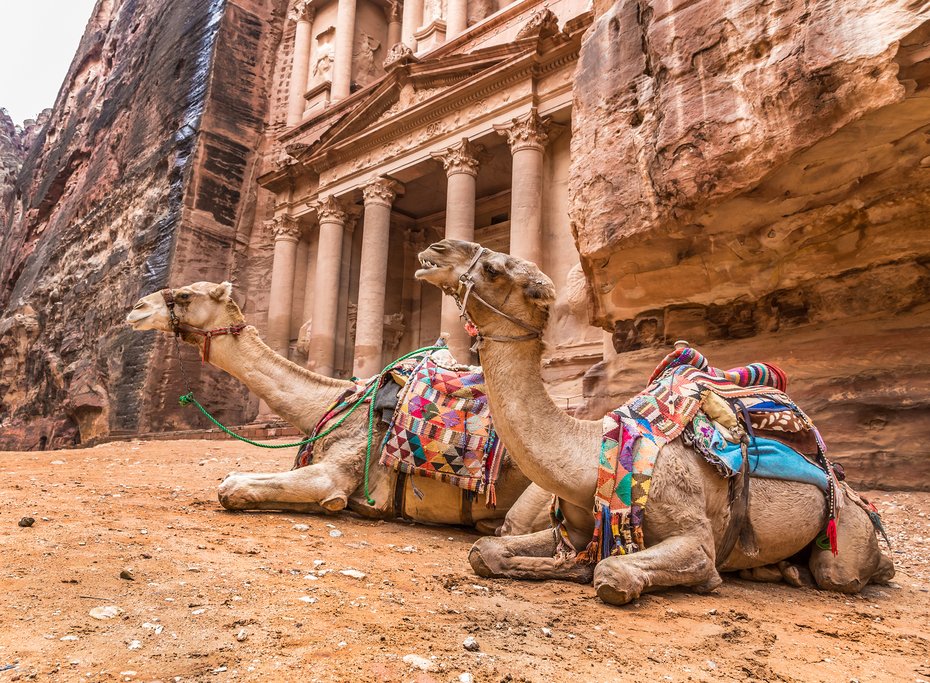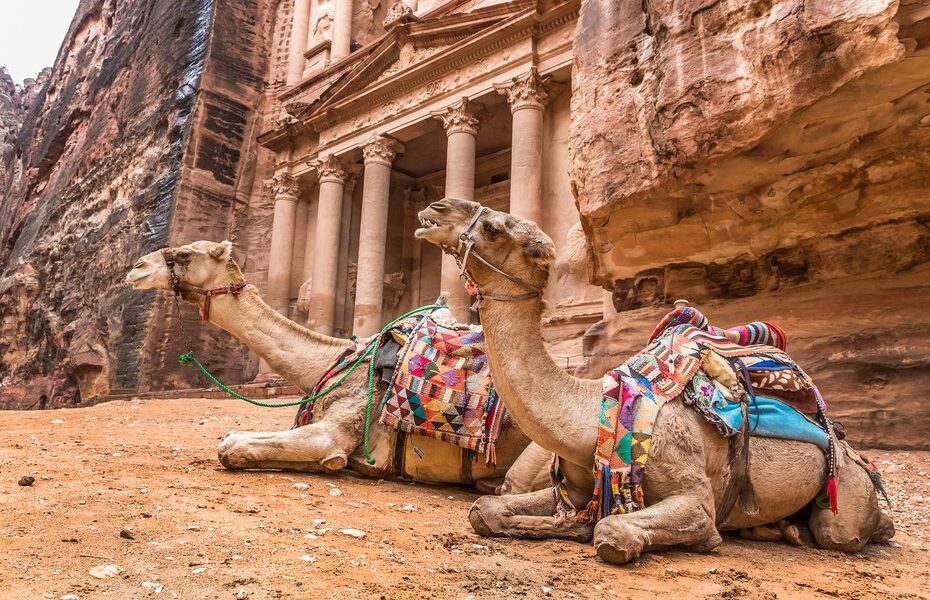
As with January, Petra in February is still in the midst of its cold, somewhat wet—and occasionally, yet rarely, snowy—winter. Although temperatures and visitor numbers are rising, Jordan’s most popular attraction is still far less crowded than in spring and autumn. And while cold, most days are bright and sunny.
## Exploring Petra in February: A Comprehensive Guide
February in Petra presents a unique travel experience. While the weather might require careful consideration, the reduced crowds and stunning landscapes make it a compelling time to visit this iconic destination. Here’s a detailed guide to help you plan your trip.
### Weather Conditions in Petra During February
Visiting Petra in February necessitates packing plenty of warm clothing. Though the temperatures are starting to rise slightly from their January lows, the average temperature for February remains a chilly 53°F (12°C). It is quite common for the temperature to dip even lower than that, with frost practically guaranteed during the nighttime hours. On exceptionally rare occasions, you might even witness snowfall! However, most days are characterized by sunny or partially overcast skies, offering an average high temperature of 59°F (15°C). It’s important to remember that while hotels and other public establishments typically have heating systems, many private residences and older structures may not be adequately heated. Therefore, dressing appropriately is paramount.
February, alongside January, is statistically the wettest month of the year in Petra. However, the rainfall is generally concentrated, occurring on an average of only four days throughout the month. Despite the relatively low frequency of rainy days, it is prudent to pack raingear along with your warm clothing. Given that you’ll likely be engaging in a substantial amount of hiking and walking, dressing in layers is highly recommended. This allows you to easily adjust your clothing to accommodate changes in temperature and activity level, ensuring optimal comfort throughout your exploration of Petra.
A crucial aspect to be aware of is that rainfall in this region often manifests as sudden and torrential downpours. When these occur, extreme caution is essential, particularly when navigating the narrow defiles and even the broader canyons of Petra. The threat of potentially deadly flash floods is a real and present danger. These dramatic channels and waterways were carved over countless millennia by the very torrents you need to be wary of. The Siq, the main entrance to Petra, can transform into a rushing riverbed during periods of heavy rainfall, and the stones underfoot become treacherous and slippery. It’s vital to be prepared for the possibility that the entire Petra site may be temporarily closed to visitors during periods of heavy rainfall due to safety concerns. Always heed the warnings of local guides and authorities regarding weather conditions.
### Crowd Levels and Travel Costs
One of the key advantages of visiting Petra in February lies in the relatively low crowd levels. While Petra undoubtedly holds immense appeal year-round, many travelers tend to postpone their visits until the arrival of warmer weather later in the year. However, as the month progresses, visitor numbers begin to gradually increase. Early February, therefore, presents an excellent opportunity to experience Petra in a more intimate and personal setting, before the larger crowds of March begin to dominate the landscape. Airfare and accommodation costs also tend to be lower during this period. With a bit of planning and flexibility, you might even be able to secure last-minute bargains at local hotels well into the middle of the month, or perhaps even later if you’re fortunate.
### Must-Do Activities in Petra
Your primary reason for visiting Petra is undoubtedly to marvel at the breathtaking beauty of iconic landmarks such as the Treasury, the Monastery, and numerous other significant ancient sites. However, to truly appreciate and understand the historical and cultural context of these wonders, consider beginning your exploration at the newly established Petra Museum. This impressive museum, which opened in May 2019 after five years of development, is conveniently located adjacent to the entrance of the archaeological park. Its extensive climate-controlled galleries encompass nearly 20,000 square feet (1,800 square meters) and showcase hundreds of artifacts carefully curated from Jordan’s Department of Antiquities. These artifacts include remarkable discoveries such as a Roman statue of Aphrodite, unearthed at Petra in 2016. A highlight of the museum is Active Nabataeans, a captivating circular hall featuring an animated floor projection that vividly depicts the emergence and development of the Nabataean civilization.
While staying in one of the numerous hotels in Wadi Musa is a convenient option, consider opting for a more adventurous and immersive experience by spending a night in a traditional tent at the Ammarin Bedouin Camp, situated near Little Petra. This offers you a unique opportunity to experience the desert environment in a way that reflects the traditional lifestyle of the Bedouin people. A major attraction of the camp is the chance to participate in authentic cultural activities, such as traditional bread-baking and Kohl production, as well as enjoying captivating folkloric music and dance performances. For those seeking more active pursuits, the camp also offers opportunities for horse trekking and camel caravans along the ancient Frankincense Route. And, of course, you can also embark on a memorable hike along the scenic trail connecting Little Petra to Petra itself.
Finally, the Petra By Night experience is an absolute must for any visitor. This unique and enchanting event provides an entirely different perspective on the site as you traverse the narrow Siq illuminated by candlelight. The journey culminates in a mesmerizing display of Bedouin music performed in front of the candlelit Treasury, creating an unforgettable sensory experience.
(Word Count: 870)
B-1472

